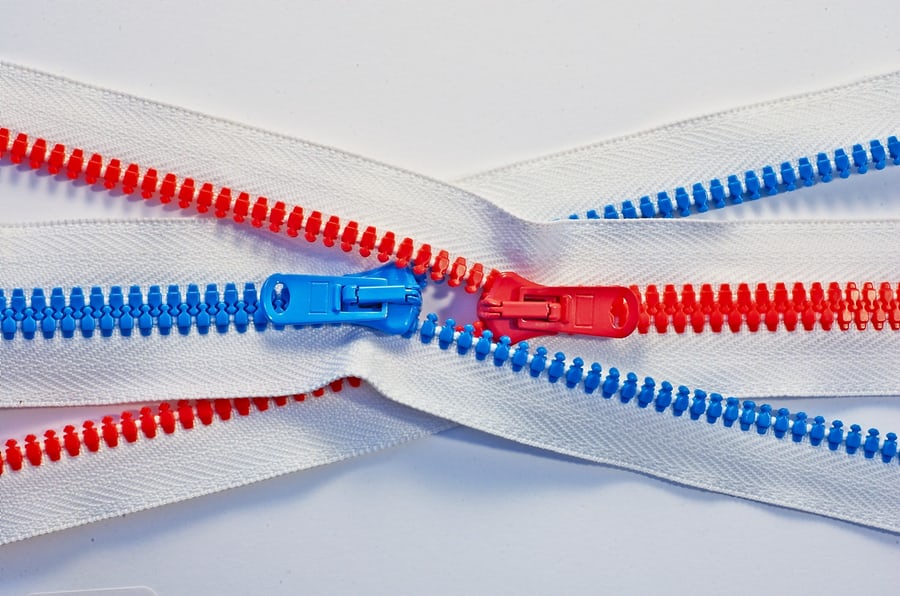A recession, 2–6 months of GDP lag and a depression, 6 quarters or more of GDP decline, occur due to an imbalance in the economy.
The economic cycle rides through waves and the economy is healthiest when it recovers smoothly from downturns and surprisingly hits another breaking point every 8–10 years.
Historically it takes some time to get most Americans back on their feet. At least a good few years.
From extension to peak, contraction to trough then finally recovery, this is the conventional way an economy gets back to speed. The most common indicators such as inflation to interest rates, housing, spending and lending would traditionally lead a country into desperation.
Yet this time around dealing with a novel virus that hits every century or so, there were fewer imbalances in the economy recovering from the Housing Crisis 13 years later. When the pandemic hit, it was not only an all of a sudden phenomenon, there were no indicators the U.S. could predict the surge, especially since the world hasn’t dealt with a deadly pandemic since the Spanish Flu at the start of the 20th century. Plus even if countries were equipped with PPE, masks and safety measures, shutting down the economy, enforcing state by state laws and wrapping their heads around the matter wouldn’t go smoothly.
We know history repeats itself but we seem to never be ready when crisis hits. That’s why a cash hoard of 6–12 months of emergency expenses and a realistic optimistic outlook on life is key.
Fiscal and monetary support along with the relatively quick response taken by Congress staved off broader damage in the economy. In March 2020, everything was in shock. The markets had one of their worst few days in history, cities were dead, people were panicking and remote work was well, remote and foreign to most.
Keep It Goin’
Yet this time around, banks to households businesses to lenders learned their lesson from prior recessions and are improving much faster, especially banks and businesses with too much cash and not enough ‘favorite customers’ who don’t have enough in their savings, overdraft victims, big spenders and faulty borrowers.
This time around, the U.S. economic recovery is unlike any in recent history. Consumers have been building cash hoards and saving diligently at an annualized rate of $2 trillion in April, scaling their income sources, getting invested and using stimulus to their advantage in the market.
Even businesses are having a labor shortage, supply constraints and too much demand, something economists would’ve never seen coming as they had to lay off millions left and right at the start of the pandemic unable to stay afloat even with PPE loans and stimulus.
Savings rates rise when there’s overall fear in the market to employment which has allowed households to get into tip-top shape. Higher earners are known to not only save roughly 50% of their income since most of it is reinvested instead of spent on necessities, they have more cash on hand which makes them extremely cautious about the future amassing gains through calculated risk taking.
The delinquent share of outstanding debt dropped to 3.1% in the first quarter of 2021, the lowest since records began in 1999 according to the Federal Bank of New York and Equifax. With a record number of SPACs and IPO debuts, boom in crypto and unheard of engagement from newly minted retail investors manipulating the rise in unprofitable meme stocks of AMC and GameStop, the financial sector hasn’t been better than ever, maybe getting too hot but that’s for another article.
The real estate sector to stocks are at their highest prices and valuations in history and nothing is slowing them down. No wonder the rich got richer as they own 80%+ of the wealth in this country.
Although the covid pandemic isn’t over with millions still unemployed, a few thousand deaths occurring per day and vaccine hesitancy, we are doing way better than expected.
I don’t want to get political here but the new WH admin certainly had something to do with this speedy recovery. Advocating for science, the vaccine rollout, mask mandates, careful reopening and consumer spending has all helped America bounce back faster than most developed 1st world nations. In fact, at this point, there’s an excess supply of vaccines and slow down of shots delivered. At the start of the rollout, we were all concerned there wouldn’t be enough. Biden hit all his milestones set for his first 100 days back in April which mainly concentrated on the pandemic.
Small business, leisure, hospitality, travel and tourism are industries that have been hit the hardest in 2020 while the major indexes, fueled by tech, banks, health care and consumer staples/discretionary surged to all time highs with the Dow Jones Industrial Average up nearly 18% from its pre-pandemic peak in February 2020.
On another front, housing prices are up 14% since that time and American household debt-service, a share of after-tax income are near the lowest levels since 1980’s!
Less debt more freedom! If you don’t need it, don’t keep it.
This epic speed of rebounding is shockingly concerning and marvelous at the same time to economists and Americans.

Too Good To Be True?
Too much business can be harmful as supply chain shortages are slowing down production and increasing prices not to mention the various ransomware attacks are increasing prices on staple goods/needs such as oil and beef as well.
Americans are already booking time to enjoy life again and venturing out yet many see their lives staying the same due to increased prices, extra space in their homes and new ways of adjusted life during covid that they don’t mind.
60% of travelers believe they will travel at the same rate they did in 2019, 30% more and 10% less. That might be a good thing considering the surging prices in the hospitality industry and Airbnb and Vrbo rentals.
TSA screened 2 million passengers who flew throughout the holiday weekend. The most since the pandemic began. This pent up demand is predominantly due to vaccinations and less hesitancy towards going out alongside burnout and restlessness.
This raises concerns for labor and supply chain shortages of goods and raw materials that typically progress alongside the recovery. Yet that isn’t the case this time as suppliers did not expect a surge in demand this big. Suppliers estimate how much they can handle in their warehouses months prior to shipment. With a concern for overpacked warehouses and bottlenecks, they try to accurately estimate the demand for the coming months. Yet with the sudden surge this past spring, with more demand and less supply, this has lead to an increase in prices, inflation and headache for both suppliers and consumers limiting reopening.
While the Fed and Yellen expect the jump in inflation to be temporary, investors worry it could persist for longer. With a massive pickup in spending, economists predict the economy’s size to surpass pre-pandemic levels this quarter. Analysts believe by the end of this year GDP will reach the path it was to project to follow had the pandemic never happened.
Compared to recent recessions from the dot-com bubble to Housing Crisis, there was weak demand for years keeping unemployment high at 6%, far higher than before the pandemic, stimulus caped at less than $100 and a lack of spending.
Luckily, a labor shortage is favored than an overload. An upside to the labor shortage comes greedy and excited teens who are benefiting the most from higher wages and the surge. You can read about how teens are staying busy this summer. Not only that, they are also getting wealthier and trying to deal with that lump sum from the markets.

Looking Back or Forward?
Natural disasters temporarily interrupt economic activity while leaving intact the underlying demand of goods. Once a natural disaster passes like a health crisis, the economy recovers faster than within a ‘typical’ recession involving market fluctuations or economic indicators. Similarly to what we are witnessing today, victims’ of natural disasters bounce back swiftly as well. According to a study conducted during Hurricane Katrina, incomes bounced back within a few years and even surpassed those of unaffected earners.
During any crisis, what’s common is that consumers are fearful of loosing their jobs and incomes which leads them cut back on spending and amplify the slump naturally helping with the recovery.
Widespread vaccination is containing covid by allowing consumers to spend more and businesses to reopen. Without it, we would be isolated like in March 2020 till today. In recent months, restaurant spending by vaccinated people has grown faster than that of the unvaccinated, according to market-research firm Cardify.ai which has also aided in hiring.
At this time, the Fed is monitoring the economy closely for the next few quarters. They are always on our side so don’t fight the Fed. If you are looking for inflation protection, I would suggest investing in TIPS, I Treasuries, gold, crypto or bonds as interest rates are abound to go up.
Although a lot went wrong, the coronavirus brought about a faster and thicker monetary and fiscal response than previous recessions pushing out 2 stimulus checks each of a couple hundred dollars, low interest rates to encourage borrowing, savings and cash cushions and the banks were more than ready to make sure ’08 wouldn’t be in-sight.
Banks, now sitting on piles of cash expected faulty low-credit score borrowers to borrow funds to support themselves throughout the pandemic who were at risk of default. Yet, they were pleasantly surprised and converting that cash back into the business. Now they are utilizing those retained earnings by investing into equipment, PP&E, SG&A, COGS, technology, etc., keeping cash on hand, a lesson they learned during the financial crisis when Bear Sterns and Lehman Brothers had no cash to keep themselves afloat as they lended out faulty mortgages to homeowners who couldn’t pay and possibly pay dividends, sell their corporate bonds into issued shares (common shares) or conduct a stock split where banks buy more shares by reducing the number of shares.
Clearly there are a lot of options with excess cash.
Throughout the pandemic, the Fed cut rates, bought billions each month in bonds and treasury securities to keep bond prices high (old bonds more attractive) through quantitative easing to pump money into the economy until full employment had returned and inflation was headed above its 2% target.
They expect no interest rate hikes until 2023, a horizon that they might need to adjust due to accelerated pickup.
The Fed’s balance sheet surged from $4.2 trillion in early March of 2020 to nearly $7.1 trillion by late May; the increase was less than $1.3 trillion during the previous recession (Housing Crisis).
“This is very different to any previous recession,” said Mr. Knightley. “Consequently, we have got a situation where household balance sheets are very strong and this can fuel sentiment and spending for quite some time.”

At the moment, eyes are all laid out on future job growth, the CPI and PPI index and payrolls to get a better read on how inflation is emerging in markets. Inflation is an indicator of a growing economy which in turn leads to higher interest rates and triggers a selloff, predominantly in tech stocks as they rely on futuristic earnings and don’t depend nor have too much current cash flow compared to value companies or other defensible companies. Plus growth stocks such as tech depend on low borrowing costs, something that is slowly fading as the Fed starts tapering off easy money policies (stimulus) and sell bonds.
Adjusting your portfolio in the coming months will be a must, especially as higher-yields become attractive for bonds.
Covid is clearly already in the history books. Let’s see how long the damage will last and if our country is stronger than before.
Maybe history doesn’t repeat this time…

